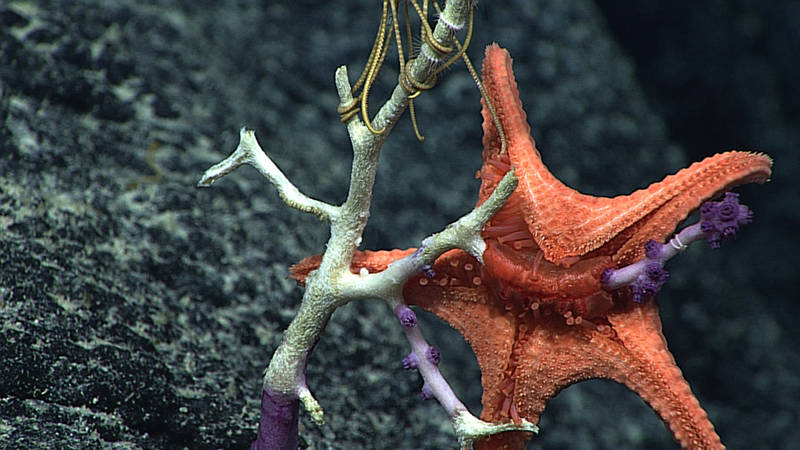

Jennifer Polinski: Sea stars have what many might consider unusual eating habits. Rather than ingesting prey through its mouth, a sea star will push its stomach out of its mouth to begin feeding. This process is called eversion and is done so that the starfish can expose prey to digestive enzymes and begin its digestion outside of its body. The stomach will not be pulled back into the sea star’s body until the liquefied food has been absorbed through the stomach lining. This image, taken over 2,500 meters deep, depicts a Circeaster pullus everting its stomach in order to feed on an unfortunate Victorgorgia coral colony.